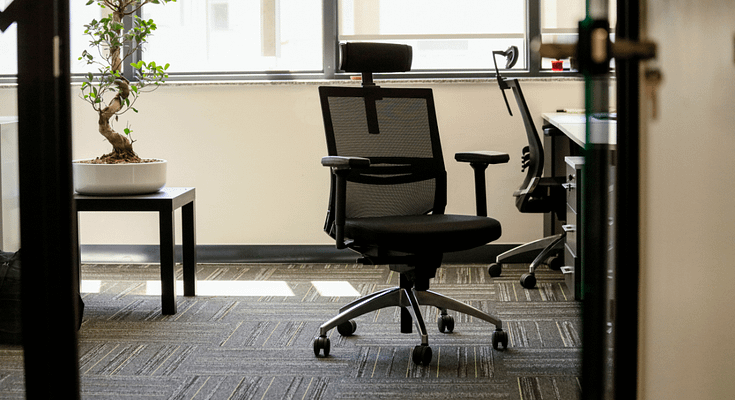If you’re in the market for an office chair, one of the first things to consider is whether a headrest would be beneficial. Ergonomic chairs with headrests can offer additional support if you work in front of a computer for extended periods.
Some people believe that adding a headrest can create neck strain by forcing your head forward. However, others say that ergonomic chairs with headrests are better than their traditional counterparts because they keep users’ heads from tipping back and forth as much while working at a desk.
So what’s the verdict? Are office chairs with headrests worth it or not? We’ll explore that question below!
Working in front of a computer for extended periods
Headrests are good for people who work in front of a computer for extended periods. A headrest can help prevent neck pain, fatigue, headaches, injuries, and poor posture. Doctors and chiropractors often recommend an ergonomic office chair with an adjustable headrest as part of a healthy sitting environment.
Headrests come in different shapes and sizes. Some are adjustable; some aren’t. Some can move up and down; others pivot or tilt forward/backward only.
The key feature that makes all these chairs work well together is the ability to adjust them. At the same time, you’re seated comfortably at your desk so that your head falls gently against the cushioning when it’s resting on top—and not sticking off into space somewhere behind where it should be positioned!
Relief from tired neck muscles
- You can reduce neck pain by using a headrest.
- A headrest can help prevent injuries that may result in painful neck muscles and headaches.
- Using a properly positioned headrest may also increase productivity, allowing you to sit up straight and avoid fatigue that leads to slouching or leaning forward, which can strain your back muscles.
Prevent headaches and neck pain.
If you sit at a desk all day and experience headaches, neck pain, or other symptoms of poor posture, an office chair with a headrest can help. However, if your desk is too high or low, the headrest will not be able to support your head properly. Therefore, you should adjust the height of the armrests and backrests until they are at the correct height.
The width of armrests should be about one-third wider than shoulder-width apart so that there is room for elbows to rest on them when working with both hands on the keyboard or mouse pad.
The chair itself should be firm but comfortable if it is going to help prevent back strain from poor sitting habits throughout the day. The seat pan should also provide adequate support for thighs and buttocks so that there is no undue pressure on hips or knees over time and proper lumbar support (the lower back)
.
Prevent fatigue and increase productivity
If you work in an office chair with a headrest, you can avoid fatigue and increase productivity by making work more comfortable.
Working in an uncomfortable position for long periods can cause physiological stress responses that affect mental performance. These responses include increased heart rate, blood pressure, and muscle tension in the neck and shoulders.
These physiological changes may be accompanied by physical discomforts, such as pain or numbness, where your body naturally curves when sitting upright on flat surfaces (the hips). They can also cause back pain, which will interfere with your ability to focus on whatever task you’re doing at the time—whether it’s reading emails or writing reports!
Customize the support offered by the headrest.
When it comes to the position of your headrest, be sure that it is adjustable and positioned so that it is in line with your ear and shoulder. It will ensure you get the proper support from your chair’s built-in headrest.
Also, make sure that your headrest has an ergonomic seat back.
The height of the seat back should be set at ear level, which means there should not be any gap between these two points on either side of the body when sitting in an office chair with a headrest.
You’ll want this alignment so that when you lean forward or backward, there isn’t any strain put on either part of your body by having one higher than another; instead, everything remains balanced throughout movements like typing or reading documents from afar!
Prevent some neck injuries
The human spine is made up of 24 vertebrae. The spinal column’s natural curvature, called lordosis, helps it withstand the weight of all that muscle and bone when standing or sitting upright.
However, when seated in an office chair without a headrest, your neck can flex forward, causing your cervical spine to bend into an unnatural position. This position can cause pain, fatigue, and headaches.
A headrest can help prevent some neck injuries by reducing the stress on your upper back muscles and giving you something to lean against when sitting in an upright position for long periods of time (which is pretty much what happens all day at work).
We think that an office chair with a headrest is a good option for those who spend long hours in front of a computer. It’s important to have the right support for your neck for comfort and health reasons. An office chair with a headrest can provide this support, which makes it easier to maintain good posture while working at your desk or doing other activities throughout the day.



